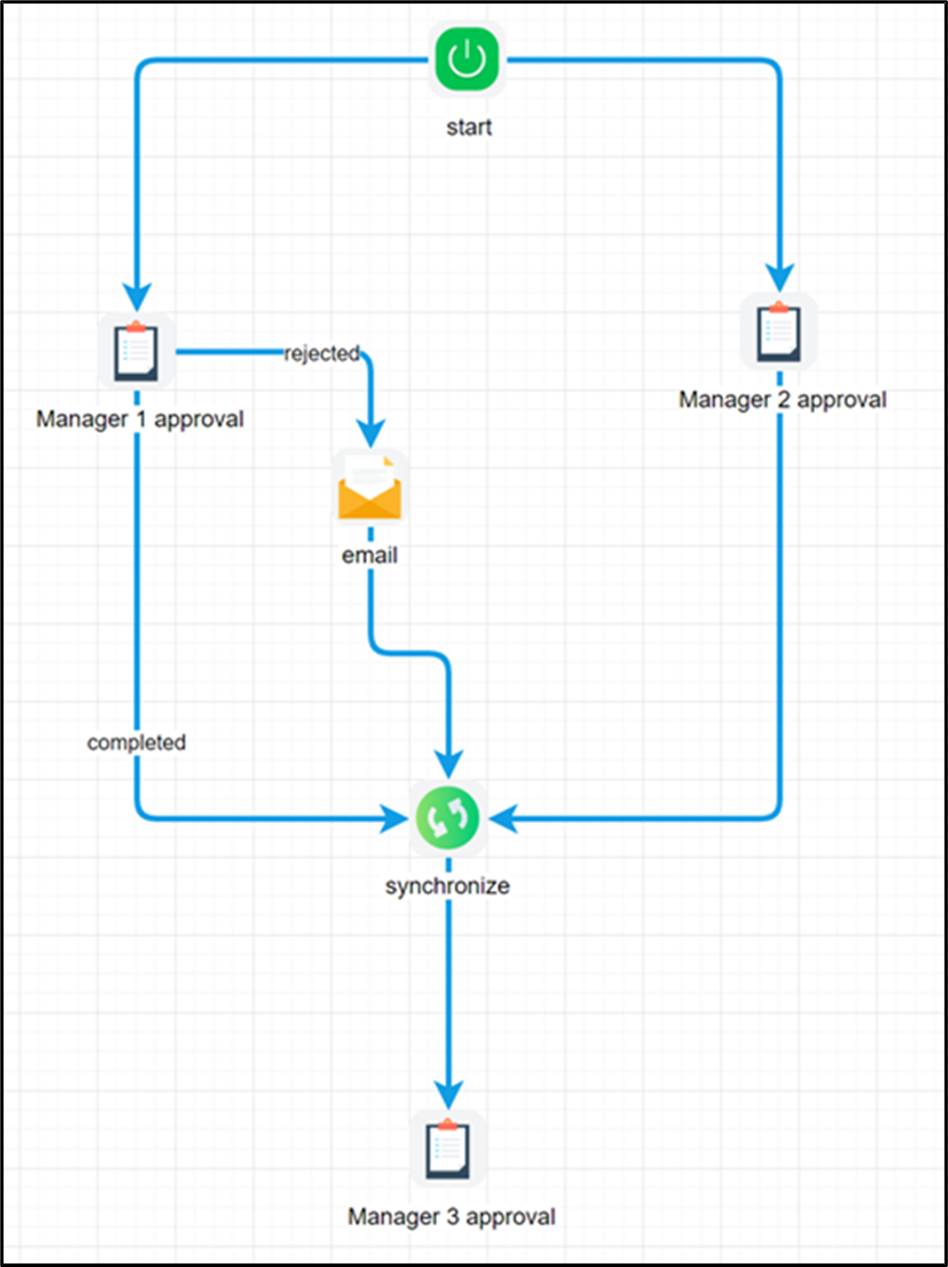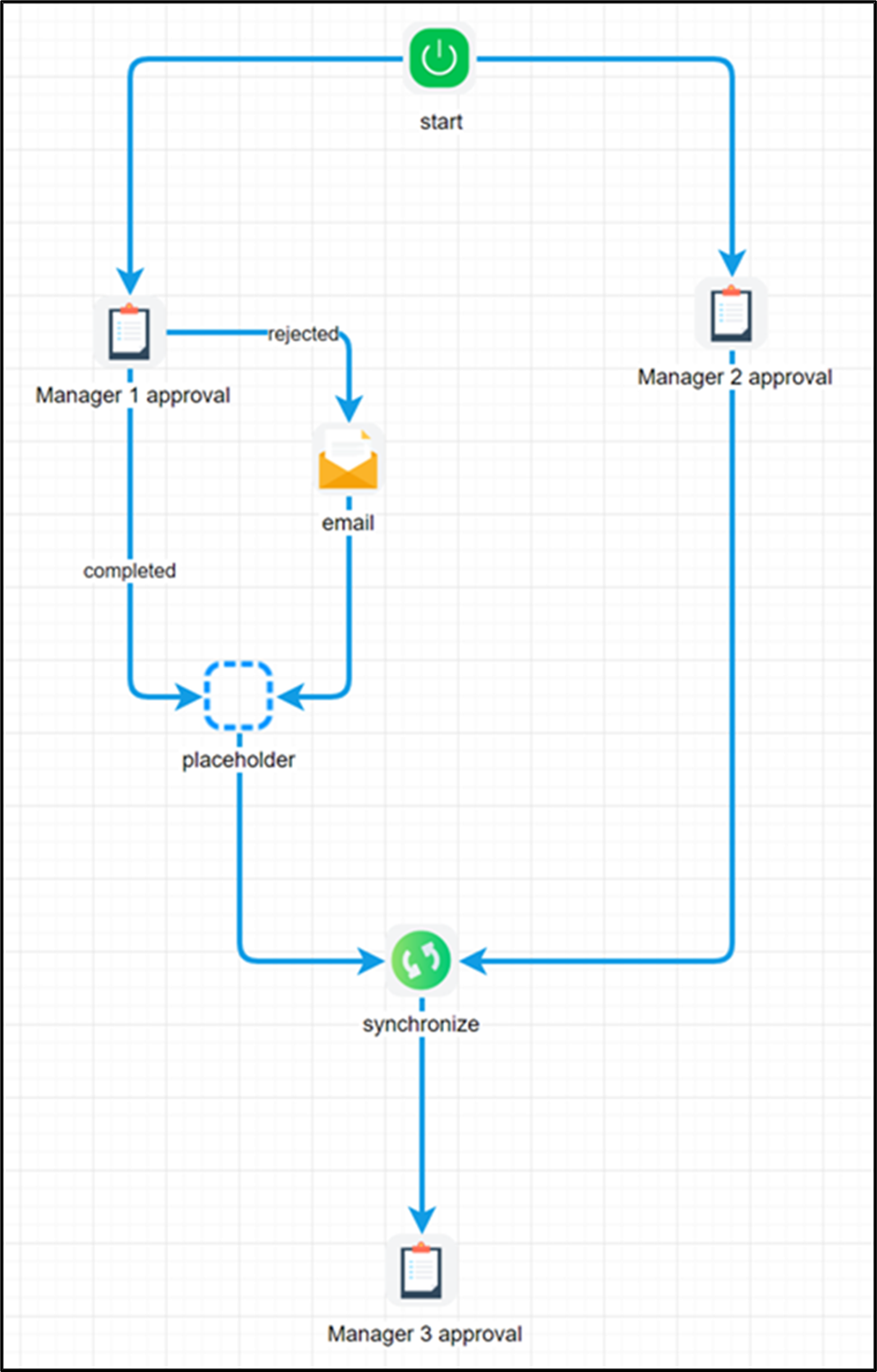A “Place Holder” step is just a pass-through step for organizing in the case of some workflow designs and is especially important to use in some circumstances where a synchronized step is used. Here is a good example of where a placeholder step is needed in a workflow routing a task whose results lead to a synchronized step:

In the above scenario, if Manager 1 rejects the task an email is then sent. This design is problematic because, by definition, all incoming connections into a synchronized step must execute before the workflow will move on, which extends turn around. In the above case, synchronize has 3 incoming connections but only 2 connections will ever execute. This problem issue is solved with the use of the “Place Holder” step. Here’s a functional version of the same workflow that uses the “Place Holder” step:

About the above diagram, connections from the Manager 1 approval step are connected to the “placeholder” step and then continue to the synchronize step. This design guarantees that all incoming connections to the synchronize step will execute on time, and as scheduled. This is only a single scenario, but there are many other scenarios that the “Place Holder” step helps with.
In previous versions of FlowWright, some of our customers were using the “Decision” step to simulate the “Place Holder” step using an expression of “1==1”, where the decision is always evaluated to “true” and passes through but this approach results in a performance hit that is resolved through use of the new "Place Holder" step.